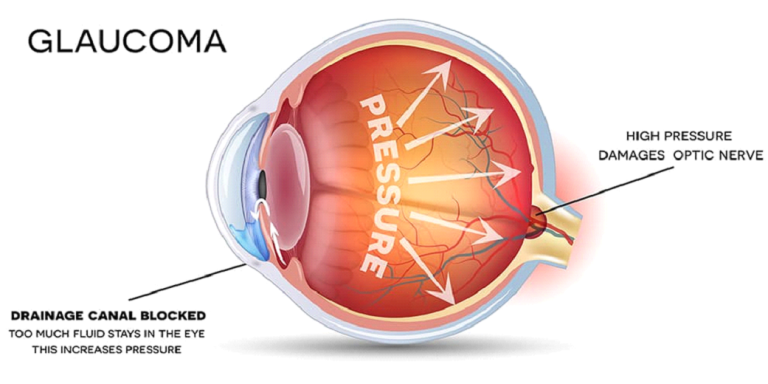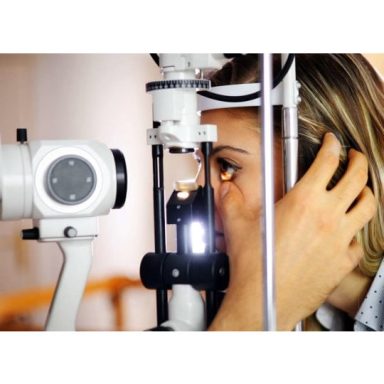
Glaucoma
Glaucoma is a group of eye conditions which can cause permanent vision loss due to damage to the Optic nerve. The main risk factor is increased intraocular pressure (eye fluid pressure). Sometimes even normal or low pressure can cause nerve damage.

What happens in Glaucoma
If diagnosed timely it can be treated either by medications or lasers, and vision can be saved.
There is a derangement in the circulation of fluid inside the eye – either the drainage of fluid is slow due to blocked outflow channels or the outflow is compromised due to shallow space, leading to raised eye pressures. Because of raised IOP (sometimes with normal or even low IOP), the optic nerve gets compromised causing initially loss of peripheral field of vision and eventually blindness. Hypermetropia (far sightedness), family history of glaucoma, steroid intake, diabetes are some associated risk factors.
It is recommended that anyone who has family history or is above 40 years of age should get regular glaucoma screening done.
Glaucoma Symptoms
Glaucoma is considered a silent disease as there are no symptoms in its earlier stages. Symptoms usually appear in its advanced stages only.

Loss of field of vision

Blurry Vision

Headaches

Red Eyes
Treatment Options
Frequently Asked Questions
FAQ's
What are the risk factors of developing Glaucoma?
If you have a positive family history or are above 40 years of age, there is higher risk of developing glaucoma. Other factors are -
Steroid intake
Eye injuries
Hypertension, Sleep apnea, Diabetic retinopathy
Hyperopia, Myopia
Advanced cataract
Is Glaucoma hereditary
If there is family history, risk of developing glaucoma increases by around 30%. Anyone who has a family history should regularly have their eyes checked for glaucoma.
What are the symptoms of Glaucoma?
Glaucoma is a silent disease. Usually there are no symptoms in its early stages. Symptoms develop only in advanced stages. Only in the case of acute angle glaucoma, a patient may experience sudden pain, redness and defective vision. It then needs immediate and aggressive treatment.
What are the different types of Glaucoma?
Glaucoma can be of two types - (1) Primary Open angle glaucoma, where the out flow channels are either clogged or closed. (2) Closed angle glaucoma – where the anterior chamber is shallow causing reduced outflow and raised pressure
Is Glaucoma treatable?
Glaucoma is an irreversible disease. If detected early, it can be treated easily by medications in the form of drops or laser (in some cases). Regular check-up and monitoring is important to prevent vision loss. In advanced cases, not responding to medical treatment, surgery may be needed.
©Copyright. All rights reserved.
We need your consent to load the translations
We use a third-party service to translate the website content that may collect data about your activity. Please review the details in the privacy policy and accept the service to view the translations.



